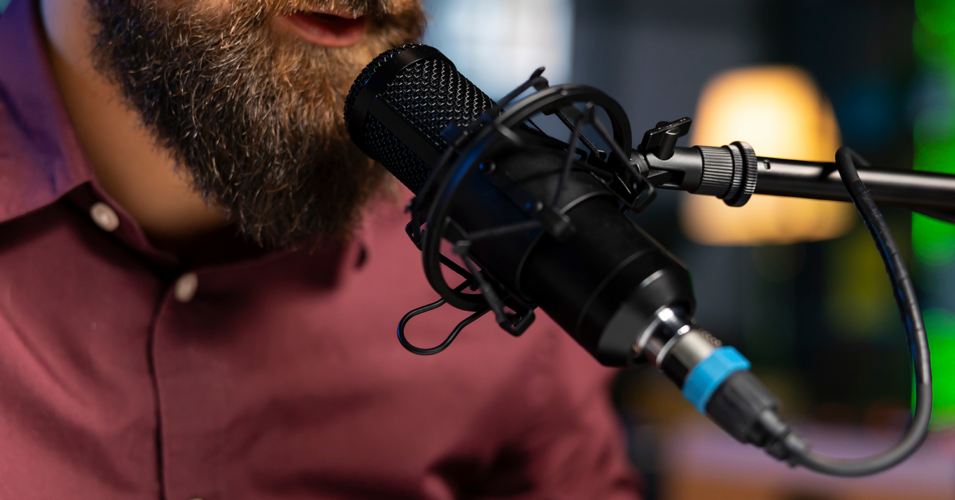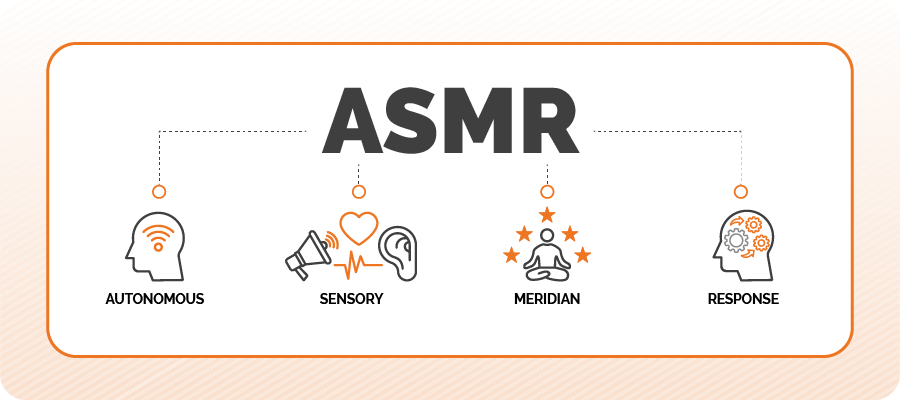What is ASMR?
Autonomous Sensory Meridian Response, commonly known as ASMR, describes a tingling sensation often felt on the skin, usually starting on the scalp and moving down the spine. This sensation is triggered by specific auditory or visual stimuli. Common triggers include the soothing crackling of a fireplace, the gentle rustling of paper, and soft whispering, among others. The primary allure of ASMR lies in its ability to evoke a sense of deep relaxation, making it a popular tool for stress relief and sleep aid.
What is the Science Behind ASMR?
The science behind ASMR is still a blooming field, with researchers striving to understand its underlying mechanisms. Some theories suggest that ASMR may be linked to the brain’s reward system, where the auditory triggers activate areas associated with pleasure and relaxation. A neurological study led by Craig Richard, an ASMR researcher, has indicated that people experiencing ASMR show increased activity in regions of the brain tied to emotion, empathy, and social bonding. Although more research is needed, initial findings indicate that ASMR could be a unique sensory experience with potential therapeutic benefits.
How Does ASMR Work?
ASMR works by engaging our senses in a manner that elicits a calming, pleasurable response. The effectiveness of ASMR triggers varies from person to person, but the common factor is the creation of a safe, comforting environment. When someone listens to crisp sounds or watches ASMR videos, the brain may release endorphins, which are natural chemicals that promote feelings of relaxation. This response can help reduce stress, alleviate anxiety, and even improve sleep quality. By tapping into our sensory experiences, ASMR can provide a deeply personal and immersive form of relaxation.
Who Experiences ASMR?
ASMR is experienced by a diverse group of individuals, though not everyone is susceptible to its effects. The phenomenon has a broad appeal, attracting people from various age groups, professions, and backgrounds. Many ASMR enthusiasts use it as a tool to manage stress, cope with insomnia, or simply enjoy the soothing sensations it provides. Interestingly, the popularity of ASMR has given rise to a vibrant ASMR community online, with numerous creators sharing their content on platforms like YouTube and Instagram and racking up millions of views. These communities not only celebrate the joy of ASMR but also foster connections among those who find solace in its unique sensory experiences.
Why Are People Engaging with ASMR?
People like to feel connected to the brands they love, but that’s not always easy with today’s digital media. Sure, you can interact with a company on social media – and maybe even get a response back – but you’re not actually feeling the product. And we really mean feeling. ASMR takes marketing to the next level by using crisp sounds that’ll make the hair on the back of your neck stand on end.
People engage with ASMR because it makes them feel physically connected to brands. They literally feel the sensations the brand is portraying. It’s not easy to do, but when it works well, it can help your brand stand out from the crowd by providing a unique customer experience.
How Brands Use ASMR in Millennial Marketing
Millennials have grown up surrounded by various screens, leading to a potential overstimulation from the constant barrage of information available. This generational context has influenced the appeal of ASMR in marketing, as it provides a respite from in-your-face advertisements. ASMR offers a soothing experience that many Millennials describe as “satisfying,” tapping into their desire for moments of calm and sensory delight.
For example, Michelob Ultra’s ASMR commercial during this year’s NFL championship featured Zoë Kravitz using gentle whispers and the soft sounds of a beer being opened and enjoyed. The ad created a tingling, static-like sensation that sparked conversations long after its debut. Similarly, Ikea’s venture into ASMR with a campaign known as “One of the Most Satisfying Ads Ever” resonates with those who are receptive to this type of sensory experience, turning confusion for some into captivation for others. These brands recognize the substantial influence of Millennial preferences and purchasing power in today’s market.
In contrast, Gen Z’s engagement with ASMR taps into their high value on authenticity and mental health. Unlike Millennials, Gen Z tends to favor ASMR content that feels less produced and more genuine—often favoring amateur creators over polished advertisements. This generation uses ASMR not just for its satisfying sensation but also as a tool for relaxation and stress relief. Brands targeting Gen Z might focus on creating authentic, relatable ASMR experiences that align with everyday activities and wellness, rather than just product enjoyment.
By understanding the subtle differences in how Millennials and Gen Z perceive and use ASMR, marketers can more effectively craft messages that resonate with each group’s unique preferences and lifestyle. This tailored approach in marketing strategies not only enhances brand engagement but also ensures relevance across different generational audiences.
Following the Trend: Case Studies
ASMR isn’t only a marketing trend; it’s picked up a lot of attention in the psychology community, as well. After all, good advertising is founded on the psychology of understanding — and adhering to — buyer behavior.
The relaxing nature of ASMR seems to be helping some people sleep better; even those who report insomnia feel more relaxed when they experience ASMR advertisements and videos. This can be especially useful for health and wellness companies who can use ASMR to communicate the feel of their brand in an entirely new way.
According to Psychology Today, people have found ASMR videos to help with:
- Relaxation (98%) - Barrett & Davis 2015
- Insomnia (82%) – Barrett & Davis 2015
- Stress (82%) - Barrett & Davis 2015
- Increased Positive Emotional States - Poerio, Blakey, Hostler, & Veltri, 2018
- Openness to Experience - Fredborg, Clark, & Smith 2017
ASMR's effectiveness in marketing can be seen across various social media platforms, where brands leverage this technique to enhance user engagement and deepen brand connection. For instance, a TikTok influencer recently showcased an ASMR product roundup, emphasizing the tactile and auditory appeal of the products, creating a mesmerizing and memorable user experience. This not only increases product visibility but also drives engagement through the sensory-rich presentation.
Another notable example is Maev, a dog food brand that utilized ASMR in a TikTok advertisement. The video focused on the sounds of the dog food being poured and the dog eating, captivating viewers and delivering a unique sensory advertisement that stands out in a crowded feed. This strategy not only highlighted the product but also engaged pet owners in a novel and intimate way, enhancing brand recall.
These examples highlight the potential benefits of integrating ASMR into social media marketing strategies.
Stay Up-To-Date on Marketing Trends with the Help of an Expert Team
Zero Gravity Marketing understands the digital trends that make marketing not only fashionable—but effective. If you’re ready to test the boundaries of your current campaigns with ASMR strategies in your social media posts, contact our team.













